 Search by Keyword
Sign Up Below for our MONTHLY BEATLES TRIVIA QUIZ!
|
"THE NIGHT BEFORE"
(John Lennon – Paul McCartney)
1965 appeared to be the year that The Beatles began to branch out as musicians on their recordings. While Paul had shown his prowess on piano many times before this year, the others stayed pretty much strictly to their own instruments.
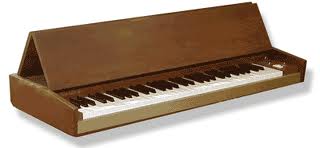 But recording sessions for 1965 saw George playing a sitar on “Norwegian Wood,” McCartney playing lead guitar parts on “Ticket To Ride” among others, and even Ringo playing a small Hammond organ part on the song “I’m Looking Through You.” John Lennon also wanted to broaden his horizons in this way, moving away from his rhythm guitar role and the occasional harmonica or lead guitar part. On February 15th, 1965, John sat down at Ringo's drums for his contribution to George's song "I Need You," while he decided to play a Hohner Pianet keyboard on both of the songs recorded on February 17th of that year. Those two songs were George’s “You Like Me Too Much” and Paul’s “The Night Before.” But recording sessions for 1965 saw George playing a sitar on “Norwegian Wood,” McCartney playing lead guitar parts on “Ticket To Ride” among others, and even Ringo playing a small Hammond organ part on the song “I’m Looking Through You.” John Lennon also wanted to broaden his horizons in this way, moving away from his rhythm guitar role and the occasional harmonica or lead guitar part. On February 15th, 1965, John sat down at Ringo's drums for his contribution to George's song "I Need You," while he decided to play a Hohner Pianet keyboard on both of the songs recorded on February 17th of that year. Those two songs were George’s “You Like Me Too Much” and Paul’s “The Night Before.”
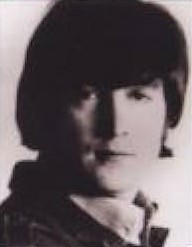 Impressed by Paul’s ability to jump onto the keyboards whenever the mood would strike him, John wanted to show this ability as well. His first time at the piano in the studio was back on June 2nd, 1964 during the recording of Paul’s “Things We Said Today,” although it was decided not to keep it in the song. While the listener may be able to detect a bit of his piano work during the bridge on the stereo mix of this song, his performance bleeding onto on open microphone, John undoubtedly felt he could do better. Therefore, his electric keyboard work on “The Night Before” is definitely heard. In fact, it can be said to be the driving force of the song. Impressed by Paul’s ability to jump onto the keyboards whenever the mood would strike him, John wanted to show this ability as well. His first time at the piano in the studio was back on June 2nd, 1964 during the recording of Paul’s “Things We Said Today,” although it was decided not to keep it in the song. While the listener may be able to detect a bit of his piano work during the bridge on the stereo mix of this song, his performance bleeding onto on open microphone, John undoubtedly felt he could do better. Therefore, his electric keyboard work on “The Night Before” is definitely heard. In fact, it can be said to be the driving force of the song.
 57 Wimpole Street, London
|
Songwriting History
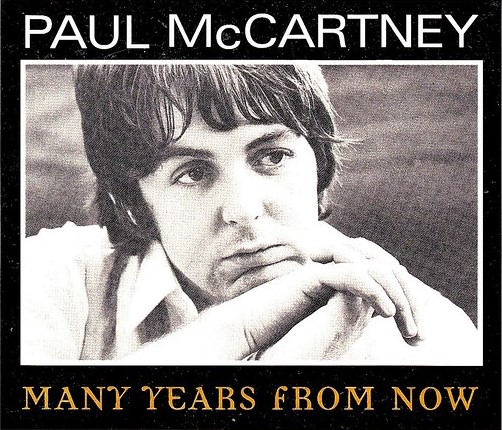 In McCartney’s book “Many Years From Now,” co-author Barry Miles states regarding “The Night Before” that the song was written “probably at Wimpole Street.” He was referring to 57 Wimpole Street in London which was the family home of Paul's current girlfriend Jane Asher, where he was living at the time. In McCartney’s book “Many Years From Now,” co-author Barry Miles states regarding “The Night Before” that the song was written “probably at Wimpole Street.” He was referring to 57 Wimpole Street in London which was the family home of Paul's current girlfriend Jane Asher, where he was living at the time.
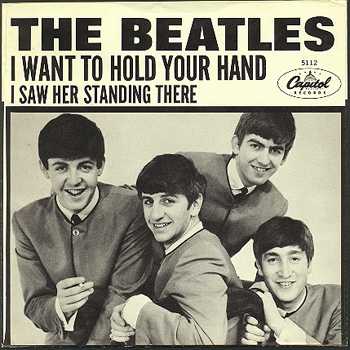 Paul and John collaborated on many songs together at this London home, including “I Want To Hold Your Hand.” However, it appears that John wasn’t present the day this song was written. Back in 1965, John appears to credit the song solely to Paul by saying: “’The Night Before’ that Paul does, is good.” Paul clarifies matters by saying “I would say that’s mainly mine, I don’t think John had a lot to do with that.” Paul and John collaborated on many songs together at this London home, including “I Want To Hold Your Hand.” However, it appears that John wasn’t present the day this song was written. Back in 1965, John appears to credit the song solely to Paul by saying: “’The Night Before’ that Paul does, is good.” Paul clarifies matters by saying “I would say that’s mainly mine, I don’t think John had a lot to do with that.”
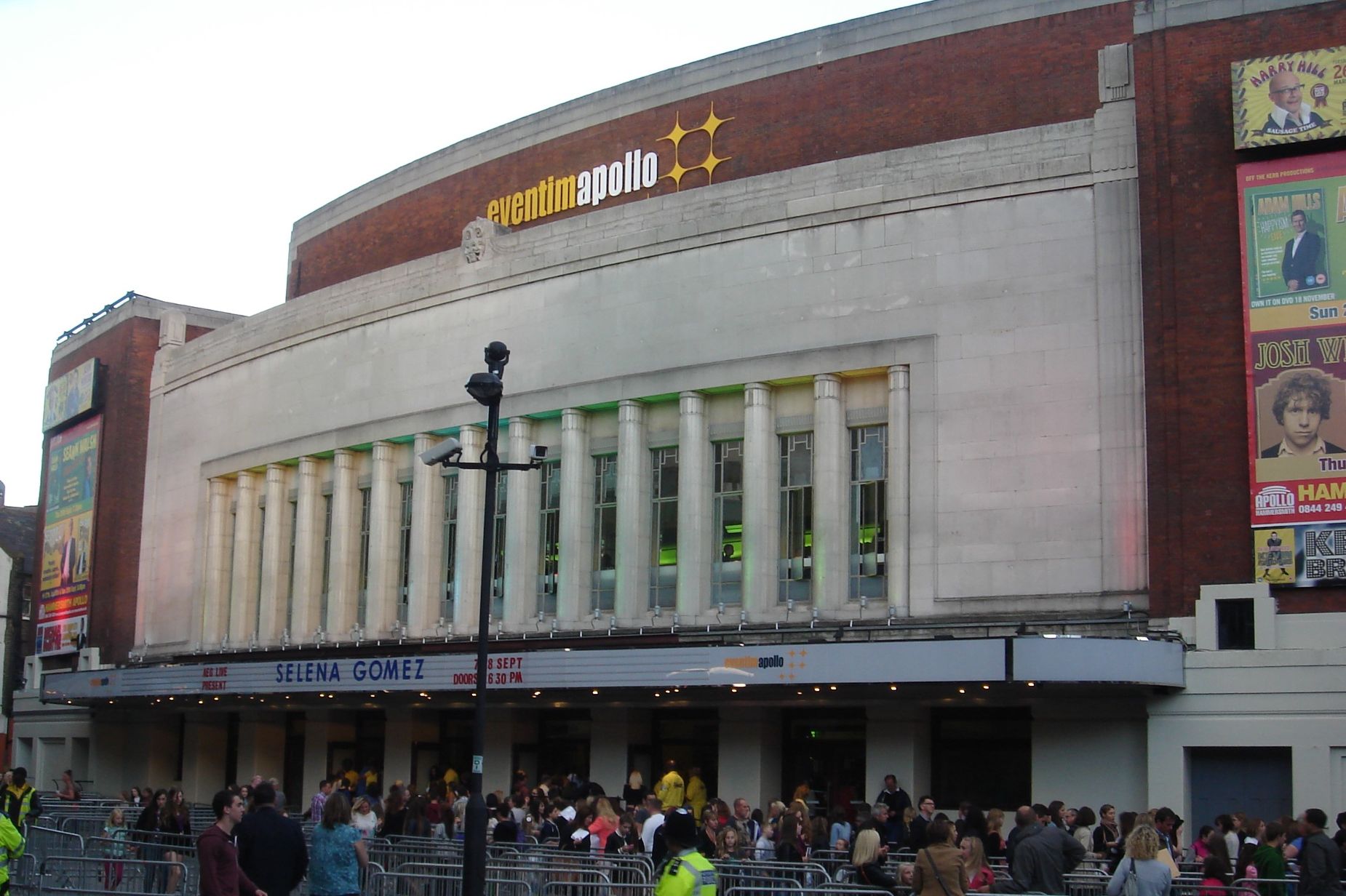 The time of writing is dependent on speculation but it appears to have been written earlier in 1965, possibly during their stay in London in January finishing up their latest seasonal production “Another Beatles Christmas Show” at the Odeon Cinema. Shortly after the final night of this show, Paul and Jane Asher left for a vacation in Tunisia so, since we know the song was written in London, we can say with relative certainty that it was written before they left. The time of writing is dependent on speculation but it appears to have been written earlier in 1965, possibly during their stay in London in January finishing up their latest seasonal production “Another Beatles Christmas Show” at the Odeon Cinema. Shortly after the final night of this show, Paul and Jane Asher left for a vacation in Tunisia so, since we know the song was written in London, we can say with relative certainty that it was written before they left.
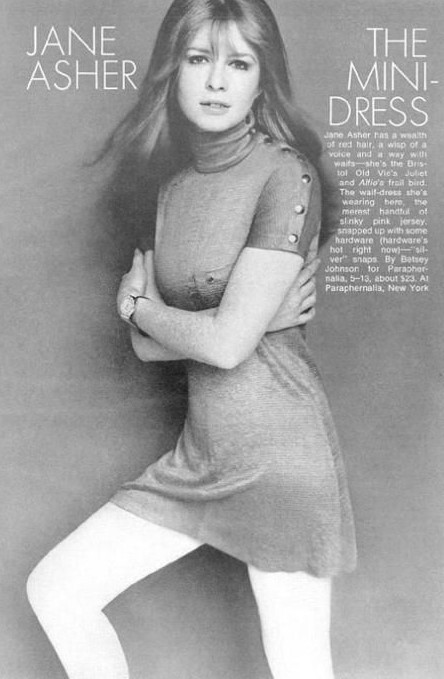 Many commentators also speculate that the lyrics are certainly about his turbulent relationship with Jane Asher. While this is possible, it seems unlikely that he would write a song about Jane ‘changing her mind’ about Paul and lying to him and then afterward go on an extensive vacation with her. Later that year, problems appeared in their courtship which led Paul to write “I’m Looking Through You” and “You Won’t See Me.” At this point, though, it makes more sense to assume the lyrics are fictional, “projecting myself into a situation and writing a nice story about it,” as John would describe it. Many commentators also speculate that the lyrics are certainly about his turbulent relationship with Jane Asher. While this is possible, it seems unlikely that he would write a song about Jane ‘changing her mind’ about Paul and lying to him and then afterward go on an extensive vacation with her. Later that year, problems appeared in their courtship which led Paul to write “I’m Looking Through You” and “You Won’t See Me.” At this point, though, it makes more sense to assume the lyrics are fictional, “projecting myself into a situation and writing a nice story about it,” as John would describe it.
Recording History
 Their third recording session of 1965, which is by extension also the third session for what became the soundtrack to their film “Help!,” was on February 17th of that year. This nine hour session began at 2 pm in EMI’s Studio Two, the first five hours being devoted entirely to Paul’s composition “The Night Before.” Their third recording session of 1965, which is by extension also the third session for what became the soundtrack to their film “Help!,” was on February 17th of that year. This nine hour session began at 2 pm in EMI’s Studio Two, the first five hours being devoted entirely to Paul’s composition “The Night Before.”
 Official documentation only details two takes being needed to complete the song, which may sound puzzling since it took a total of five hours to fully record it. We need to remember, though, that these two takes were of the rhythm track only, which consisted of Ringo on drums and Paul on bass (track one), George playing rhythm on his Gretsch electric guitar and John on electric piano (track two). Once it was decided that "take two" was the better rhythm track, a healthy dose of overdubs were then recorded on top of it. Official documentation only details two takes being needed to complete the song, which may sound puzzling since it took a total of five hours to fully record it. We need to remember, though, that these two takes were of the rhythm track only, which consisted of Ringo on drums and Paul on bass (track one), George playing rhythm on his Gretsch electric guitar and John on electric piano (track two). Once it was decided that "take two" was the better rhythm track, a healthy dose of overdubs were then recorded on top of it.
These overdubs included the vocals, first Paul’s lead vocal with backing vocals from John and George (track three), and then Paul’s double-tracked lead vocals, Ringo on maracas and the guitar solo (track four). The solo portion of the song was left empty in the rhythm track which was then overdubbed here, but who played it?
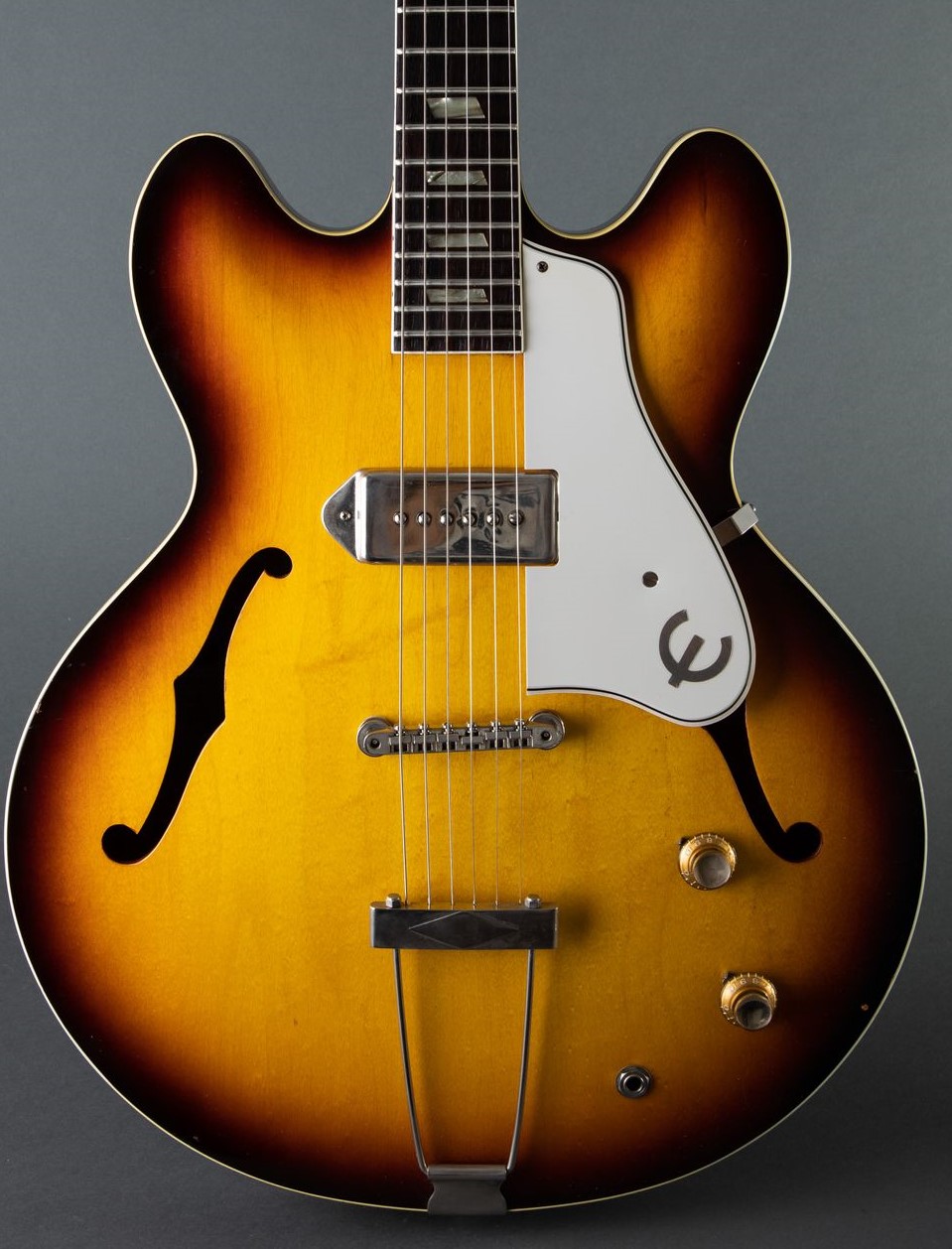 “George and Paul are playing the same break exactly, both playing but in different octaves,” Lennon informed Melody Maker on February 27th, 1965. Therefore, as an overdub onto track 4, both George and Paul played the same guitar solo but one was an octave higher than the other. Paul played his Epiphone Casino guitar while George used his newly aquired Fender Stratocaster. The final seconds of the song feature a miniature reprise of this solo, which was recorded the same way. By 7 pm, the song was complete and work started on George’s “You Like Me Too Much,” which extended the day another four hours. “George and Paul are playing the same break exactly, both playing but in different octaves,” Lennon informed Melody Maker on February 27th, 1965. Therefore, as an overdub onto track 4, both George and Paul played the same guitar solo but one was an octave higher than the other. Paul played his Epiphone Casino guitar while George used his newly aquired Fender Stratocaster. The final seconds of the song feature a miniature reprise of this solo, which was recorded the same way. By 7 pm, the song was complete and work started on George’s “You Like Me Too Much,” which extended the day another four hours.
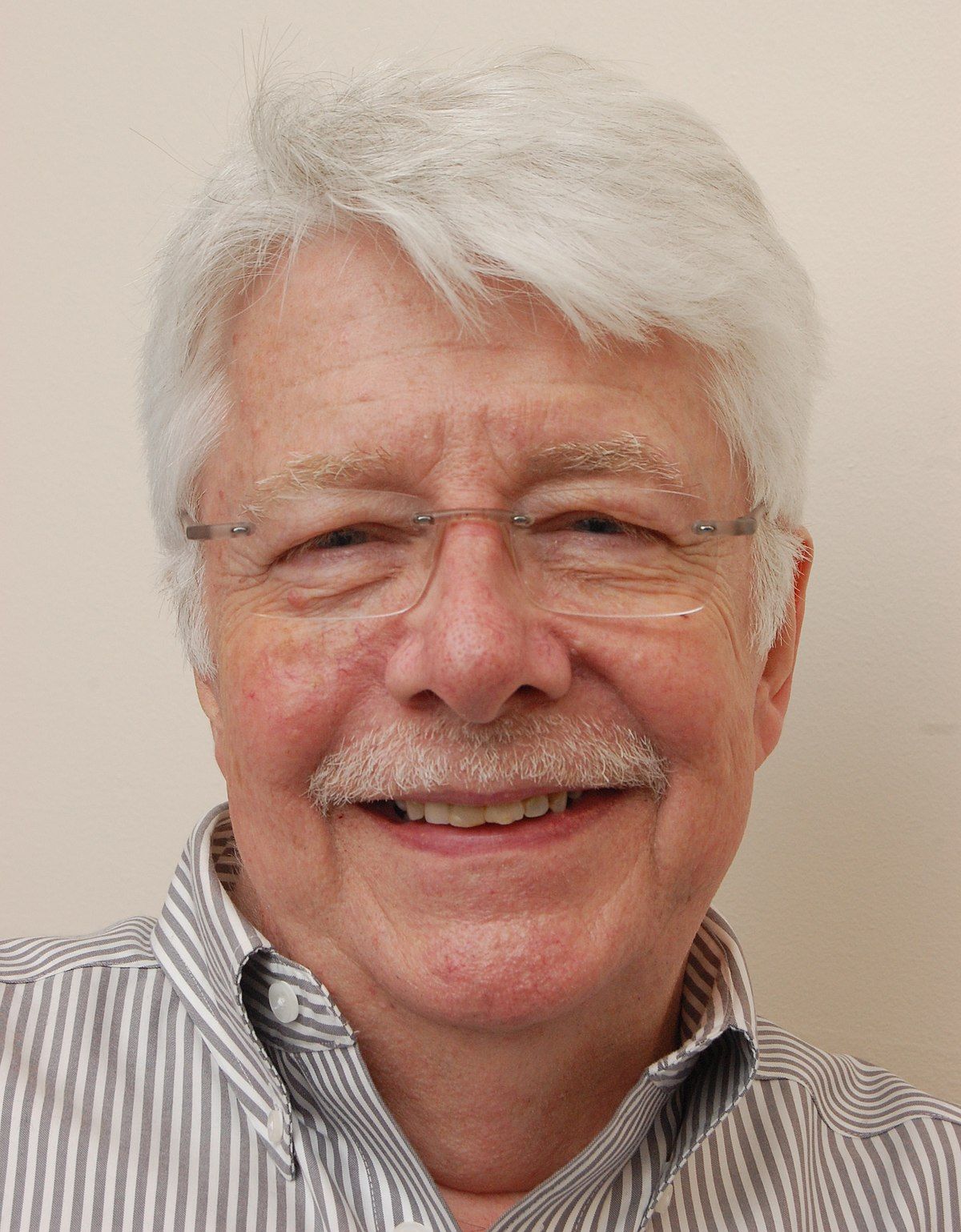 The mono mix of “The Night Before” was created the next day, February 18th, 1965 in the control room of EMI Studio Two by producer George Martin and engineers Norman Smith and Ken Scott. This mix was used in both the film and the British album. The mono mix of “The Night Before” was created the next day, February 18th, 1965 in the control room of EMI Studio Two by producer George Martin and engineers Norman Smith and Ken Scott. This mix was used in both the film and the British album.
 The first stereo mix of the song was made on February 23rd, 1965 in the control room of EMI Studio Two, but George Martin didn’t deem this task important enough to attend. Norman Smith supervised this stereo mixing session with 2nd engineer Malcolm Davies assisting. This mix ended up being used on the British and American stereo albums as well as the American mono album, since they combined both channels to create their own mono mix. The first stereo mix of the song was made on February 23rd, 1965 in the control room of EMI Studio Two, but George Martin didn’t deem this task important enough to attend. Norman Smith supervised this stereo mixing session with 2nd engineer Malcolm Davies assisting. This mix ended up being used on the British and American stereo albums as well as the American mono album, since they combined both channels to create their own mono mix.
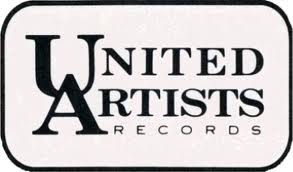 A second stereo mix of “The Night Before” was created on April 18th, 1965 in Room 65 of EMI. Since they needed to create mono and stereo mixes of the newly recorded title track “Help!” to send to United Artists for the movie, they also thought to send a special stereo mix of “The Night Before” as well. Since these mixes were intended for the film, George Martin thought it important to attend, along with Norman Smith and Phil McDonald as engineers. Despite this effort, United Artists used the mono mix of “The Night Before” made on February 18th, 1965 for the film and this stereo mix was never used for anything. A second stereo mix of “The Night Before” was created on April 18th, 1965 in Room 65 of EMI. Since they needed to create mono and stereo mixes of the newly recorded title track “Help!” to send to United Artists for the movie, they also thought to send a special stereo mix of “The Night Before” as well. Since these mixes were intended for the film, George Martin thought it important to attend, along with Norman Smith and Phil McDonald as engineers. Despite this effort, United Artists used the mono mix of “The Night Before” made on February 18th, 1965 for the film and this stereo mix was never used for anything.
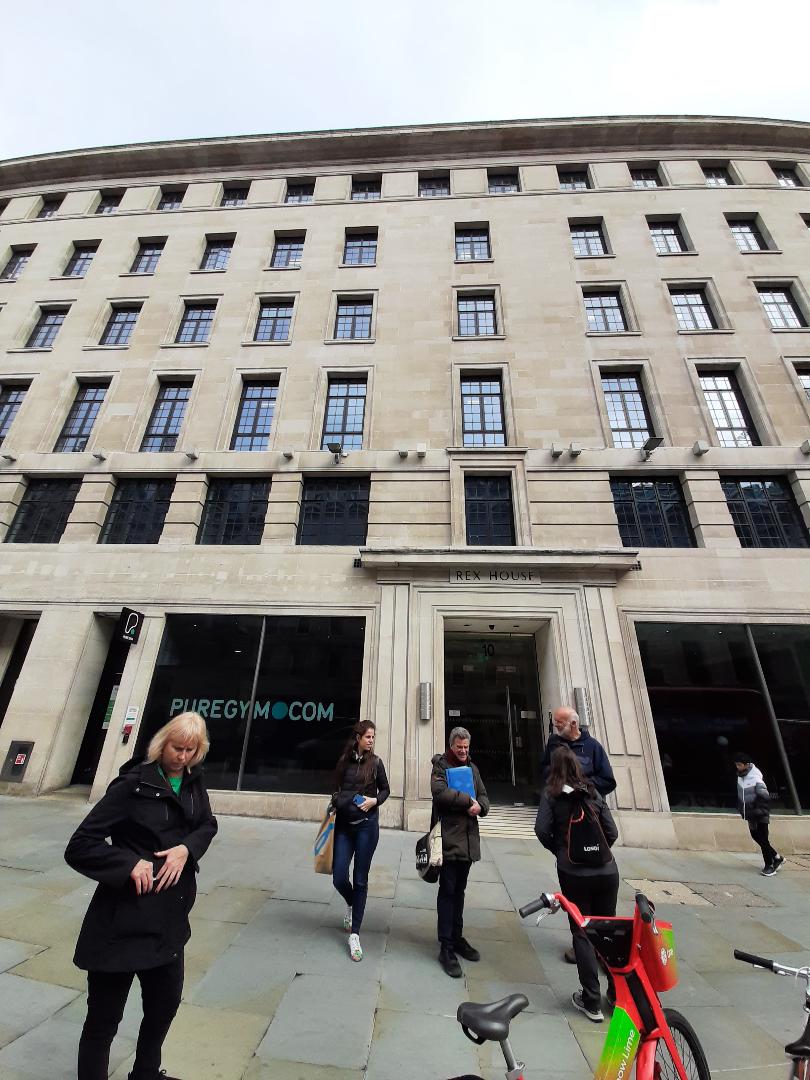 The Beatles recorded a complete new rendition of the song on May 26th, 1965 in Studio One of BBC Piccadilly Studios in London for their very last BBC radio show. This was recorded between 2:30 and 6 pm on this day, the recording being produced by Keith Bateson. Entitled “The Beatles (Invite You To Take A Ticket To Ride)” this radio show was broadcast on June 7th of that year between 10 am and 12:15 pm, which was almost two months before the song was released as part of the British “Help!” album. The Beatles recorded a complete new rendition of the song on May 26th, 1965 in Studio One of BBC Piccadilly Studios in London for their very last BBC radio show. This was recorded between 2:30 and 6 pm on this day, the recording being produced by Keith Bateson. Entitled “The Beatles (Invite You To Take A Ticket To Ride)” this radio show was broadcast on June 7th of that year between 10 am and 12:15 pm, which was almost two months before the song was released as part of the British “Help!” album.
 Since the first stereo mix wasn’t made under the supervision of George Martin, a decision was made to create a new mix in 1986 for its debut on compact disc. Therefore, this third stereo mix created by George Martin is the one most known to all these days, although it’s nearly identical to what was originally available in 1965. Since the first stereo mix wasn’t made under the supervision of George Martin, a decision was made to create a new mix in 1986 for its debut on compact disc. Therefore, this third stereo mix created by George Martin is the one most known to all these days, although it’s nearly identical to what was originally available in 1965.
Song Structure and Style
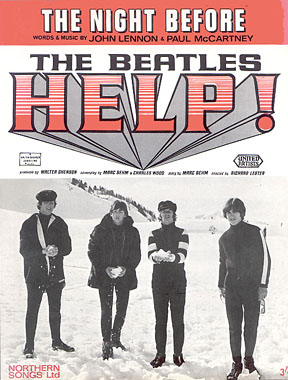 This formula pop song is structured in a format that was very usual for the early Beatles, this being the ‘verse/ verse/ bridge/ verse/ (partially instrumental) verse/ bridge/ verse’ format (or aabaaba) with a small introduction included. Because the song moves along at a nice pace with time to spare in filling out a standard two-and-a-half minute length, a solo section (that is, half solo/half verse) is included as well as a repeat of the bridge and final verse. As was also evident in their earlier work, such as 1964’s “Can’t Buy Me Love” and “You Can’t Do That,” we see here a bluesy vocal style on top of the framework of a pop song which, as usual, works well. This formula pop song is structured in a format that was very usual for the early Beatles, this being the ‘verse/ verse/ bridge/ verse/ (partially instrumental) verse/ bridge/ verse’ format (or aabaaba) with a small introduction included. Because the song moves along at a nice pace with time to spare in filling out a standard two-and-a-half minute length, a solo section (that is, half solo/half verse) is included as well as a repeat of the bridge and final verse. As was also evident in their earlier work, such as 1964’s “Can’t Buy Me Love” and “You Can’t Do That,” we see here a bluesy vocal style on top of the framework of a pop song which, as usual, works well.
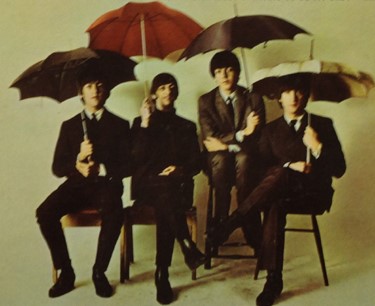 Before the aforementioned pattern begins, we hear a somewhat labored but effective eight-measure introduction. With the absence of any lead instrument or vocals, what we witness here is the basic rhythm track that sets the stage for the song without any frills. The basic chords change every two measures during this introduction, while the rest of the song changes chords on every measure almost all of the time. Some accidental vocal imperfections can easily be detected in the fourth measure of the introduction, which are heard in both the stereo and mono mixes. Before the aforementioned pattern begins, we hear a somewhat labored but effective eight-measure introduction. With the absence of any lead instrument or vocals, what we witness here is the basic rhythm track that sets the stage for the song without any frills. The basic chords change every two measures during this introduction, while the rest of the song changes chords on every measure almost all of the time. Some accidental vocal imperfections can easily be detected in the fourth measure of the introduction, which are heard in both the stereo and mono mixes.
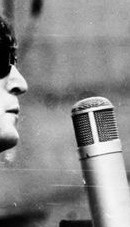 The first sixteen-measure verse begins immediately on the down-beat with Paul’s double-tracked vocals starting out the first sentence with “We said our goodbyes…” Interestingly, John and George’s harmonized backing vocals finish this sentence with the title of the song, “…ah, the night before.” This pattern continues in every third and fourth measure as well as every seventh and eighth measure of each verse. The first sixteen-measure verse begins immediately on the down-beat with Paul’s double-tracked vocals starting out the first sentence with “We said our goodbyes…” Interestingly, John and George’s harmonized backing vocals finish this sentence with the title of the song, “…ah, the night before.” This pattern continues in every third and fourth measure as well as every seventh and eighth measure of each verse.
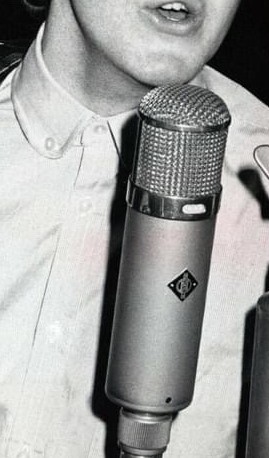 Notice too that Paul’s solo vocal that precedes the backing vocals trail off into the backing vocals section while the backing vocals trail off into Paul’s solo vocal line that follows it. For instance, Paul adds extra syllables to the word “goodbye-i-i-i” that is still heard when John and George start singing their part. Likewise, the backing vocals extend and slide down their final word “beforrrrrrrre” while Paul starts his next line “love was in your eyes.” This interesting interplay creates an overlapping effect that portrays the cohesiveness and cooperative nature The Beatles enjoyed during this part of their career. Notice too that Paul’s solo vocal that precedes the backing vocals trail off into the backing vocals section while the backing vocals trail off into Paul’s solo vocal line that follows it. For instance, Paul adds extra syllables to the word “goodbye-i-i-i” that is still heard when John and George start singing their part. Likewise, the backing vocals extend and slide down their final word “beforrrrrrrre” while Paul starts his next line “love was in your eyes.” This interesting interplay creates an overlapping effect that portrays the cohesiveness and cooperative nature The Beatles enjoyed during this part of their career.
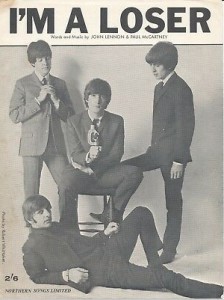 The second half of the verses let Paul tell the rest of his tale by himself, although John and George create a backwash in the ninth through twelfth measure as the word “before” morphs into a harmonized “aaah.” As any good Beatles tune will do, the title of the song appears at the end of each verse. The pattern continues here again as Paul finishes the thought of the verse, as well as the moral of his entire story, with his solo line “treat me like you did the night before.” Paul even throws in a little vocal gymnastics on the word “did,” which is a slurred grace note reminiscent of what John repeatedly did on the previous year’s “I’m A Loser.” (For instance, notice the vocal slur John sings in the first verse on the word “love” during the line “there is one love I should never have crossed.”) The second half of the verses let Paul tell the rest of his tale by himself, although John and George create a backwash in the ninth through twelfth measure as the word “before” morphs into a harmonized “aaah.” As any good Beatles tune will do, the title of the song appears at the end of each verse. The pattern continues here again as Paul finishes the thought of the verse, as well as the moral of his entire story, with his solo line “treat me like you did the night before.” Paul even throws in a little vocal gymnastics on the word “did,” which is a slurred grace note reminiscent of what John repeatedly did on the previous year’s “I’m A Loser.” (For instance, notice the vocal slur John sings in the first verse on the word “love” during the line “there is one love I should never have crossed.”)
This verse concludes with a fanfare that consists of two ascending chords. This was included as a suitable transition from one verse to the next, since the last chord of the verse would otherwise be the same as the first chord of the next verse. Later in the song, whenever a verse goes into a bridge, there is no need for this fanfare so they don’t play it.
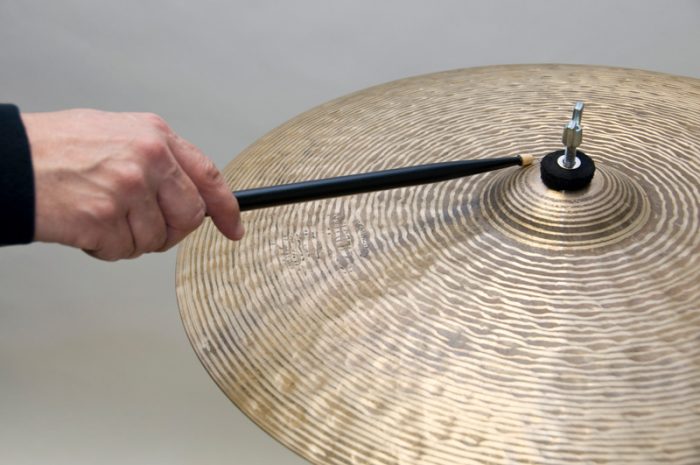 After a second verse that is identical in structure except for the omission of the ending fanfare, we go into the first occurrence of the bridge. The bridge is eight measures long and is sung in its entirety by Paul alone, although he is double-tracked throughout. In order to make the arrangement stand out, Ringo switches from playing his ride cymbal normally to hitting just the bell of the cymbal. He also switches to alternating from a rim shot on the snare drum to a double hit on his tom-tom, which creates a Latin rhythm (as witnessed in the film footage of the movie “Help!”). The melodic climax of the song occurs at the end of the bridge when Paul hits a high A note on the word “cry.” After a second verse that is identical in structure except for the omission of the ending fanfare, we go into the first occurrence of the bridge. The bridge is eight measures long and is sung in its entirety by Paul alone, although he is double-tracked throughout. In order to make the arrangement stand out, Ringo switches from playing his ride cymbal normally to hitting just the bell of the cymbal. He also switches to alternating from a rim shot on the snare drum to a double hit on his tom-tom, which creates a Latin rhythm (as witnessed in the film footage of the movie “Help!”). The melodic climax of the song occurs at the end of the bridge when Paul hits a high A note on the word “cry.”
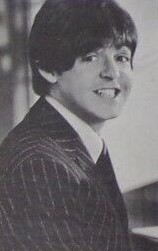 After the bridge, we return to an identical repeat of the first verse which segues nicely into the "instrumental/verse" section of the song. The end of this verse, though, shows Paul obviously enjoying himself with his vocal track. The first of his double-tracked vocals has him ending the last line with “the night before…oh, oh…yesssss.” After the bridge, we return to an identical repeat of the first verse which segues nicely into the "instrumental/verse" section of the song. The end of this verse, though, shows Paul obviously enjoying himself with his vocal track. The first of his double-tracked vocals has him ending the last line with “the night before…oh, oh…yesssss.”
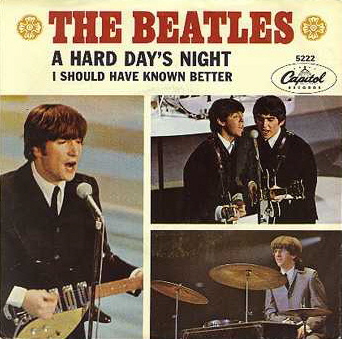 While the next section is structurally identical to a verse, the first eight measures are utilized as the instrumental, or solo, section of the song, while the last eight measures conclude the verse vocally with the lyrics of the second verse. The Beatles were used to utilizing this trick as seen in “A Hard Day’s Night” and “I’ll Follow The Sun” (to name a couple). While the next section is structurally identical to a verse, the first eight measures are utilized as the instrumental, or solo, section of the song, while the last eight measures conclude the verse vocally with the lyrics of the second verse. The Beatles were used to utilizing this trick as seen in “A Hard Day’s Night” and “I’ll Follow The Sun” (to name a couple).
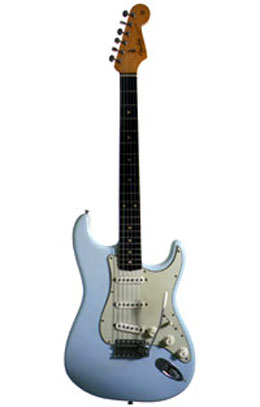 The guitar solo heard in the first eight measures is anything but ad-lib as would be heard in early Beatles recordings. This dual guitar solo, by both George and Paul playing the same notes an octave apart, is so well rehearsed that it comes across as nearly flawless. The second of Paul’s double-tracked vocals shows him adding a small nuance at the end, this time in the form of a quick “yeah.” The guitar solo heard in the first eight measures is anything but ad-lib as would be heard in early Beatles recordings. This dual guitar solo, by both George and Paul playing the same notes an octave apart, is so well rehearsed that it comes across as nearly flawless. The second of Paul’s double-tracked vocals shows him adding a small nuance at the end, this time in the form of a quick “yeah.”
After an identical repeat of the bridge, they then repeat the second verse, which is also becoming an established pattern (witness “Eight Days A Week” and “Ticket To Ride”). It sounds as though a minor flub occurred during Paul’s double-tracking overdub. He apparently started singing the first verse for the final verse (beginning with the word “we”) instead of the second verse (beginning with the word “were”). Nobody thought we’d catch it, but we did!
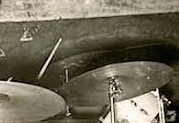 Because of the inclusion of a small conclusion to the song, this last verse is actually eighteen measures long. The ending consists of a partial reprise of the fanfare that is heard at the end of some of the verses while Paul repeats the title of the song once again (as if we didn’t know what the song was called by that point). As the eighteenth measure begins, the song ends with a powerful final chord and crashing cymbal. Because of the inclusion of a small conclusion to the song, this last verse is actually eighteen measures long. The ending consists of a partial reprise of the fanfare that is heard at the end of some of the verses while Paul repeats the title of the song once again (as if we didn’t know what the song was called by that point). As the eighteenth measure begins, the song ends with a powerful final chord and crashing cymbal.
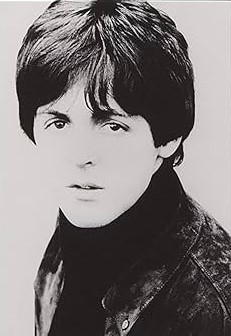 This song is obviously Paul’s vehicle to shine in the movie soundtrack. His exuberant vocal work stands out, as does his bass playing which by this point in the game is getting a little more well-deserved volume in the mix. His guitar work in the solo gets the job done, Paul probably the one to orchestrate the solo with George in the first place. This song is obviously Paul’s vehicle to shine in the movie soundtrack. His exuberant vocal work stands out, as does his bass playing which by this point in the game is getting a little more well-deserved volume in the mix. His guitar work in the solo gets the job done, Paul probably the one to orchestrate the solo with George in the first place.
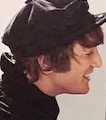 John is next to be mentioned for his impressive first jaunt as a keyboardist on a Beatles song (his barely heard chords in “Things We Said Today” hardly worth mentioning). His and George’s background harmonies in the verses are also done suitably well. George doesn’t feature prominently in this song, although his rhythm guitar work and his half of the guitar solo are done proficiently. Ringo puts in a spirited performance with his small drum fills and changes in texture when required. John is next to be mentioned for his impressive first jaunt as a keyboardist on a Beatles song (his barely heard chords in “Things We Said Today” hardly worth mentioning). His and George’s background harmonies in the verses are also done suitably well. George doesn’t feature prominently in this song, although his rhythm guitar work and his half of the guitar solo are done proficiently. Ringo puts in a spirited performance with his small drum fills and changes in texture when required.
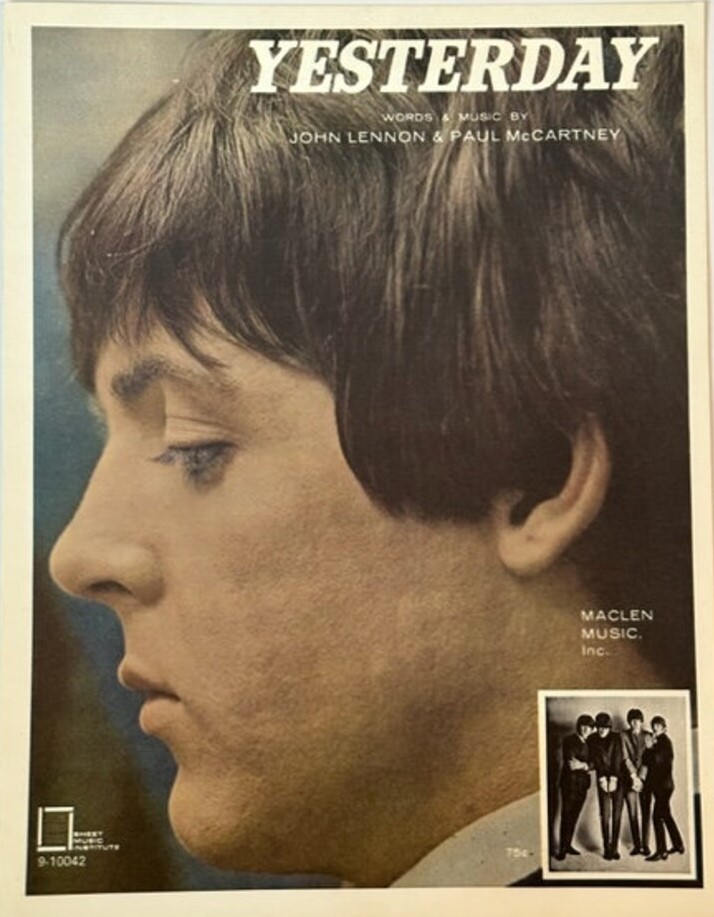 Lyrically, Paul tells the familiar story of how yesterday, all his troubles were so far away. Coincidentally, these lyrics depict how last night everything seemed fine with his relationship but, as he states, “now today I find you have changed your mind.” When they had said their “goodbyes” yesterday, he remembers that ‘love was in her eyes’ and she was “so sincere.” He resolves to remember her as she was the previous night, although these memories make him “wanna cry.” Lyrically, Paul tells the familiar story of how yesterday, all his troubles were so far away. Coincidentally, these lyrics depict how last night everything seemed fine with his relationship but, as he states, “now today I find you have changed your mind.” When they had said their “goodbyes” yesterday, he remembers that ‘love was in her eyes’ and she was “so sincere.” He resolves to remember her as she was the previous night, although these memories make him “wanna cry.”
While the similarities to this and a very popular Paul song of the same era are obvious, the differences are also apparent. This time, he accusingly asks, “were you telling lies?” He also is addressing his former girlfriend directly, while the other song (which will remain nameless) is sung in the third person.
American Releases
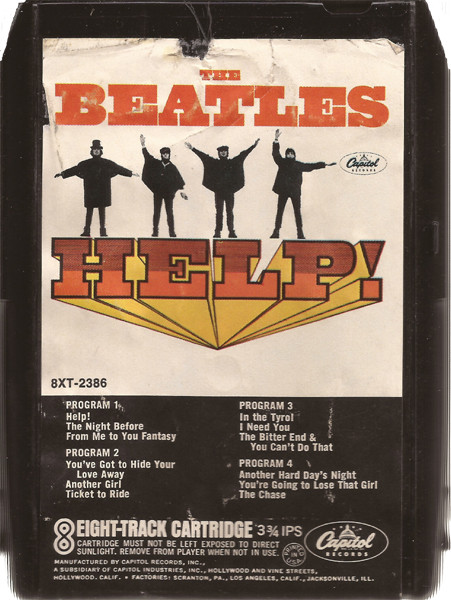 August 13th, 1965 was the release date of Capitol’s soundtrack album for the movie “Help!” This was the first American release for Paul’s song “The Night Before,” which was positioned at the top of the Billboard album chart for nine straight weeks. The mono release of this album still featured the stereo mix in a “type B” mix-down made by Capitol Records. This soundtrack album was released as an individual compact disc on January 21st, 2014, both the mono and stereo versions of the album contained on a single CD. August 13th, 1965 was the release date of Capitol’s soundtrack album for the movie “Help!” This was the first American release for Paul’s song “The Night Before,” which was positioned at the top of the Billboard album chart for nine straight weeks. The mono release of this album still featured the stereo mix in a “type B” mix-down made by Capitol Records. This soundtrack album was released as an individual compact disc on January 21st, 2014, both the mono and stereo versions of the album contained on a single CD.
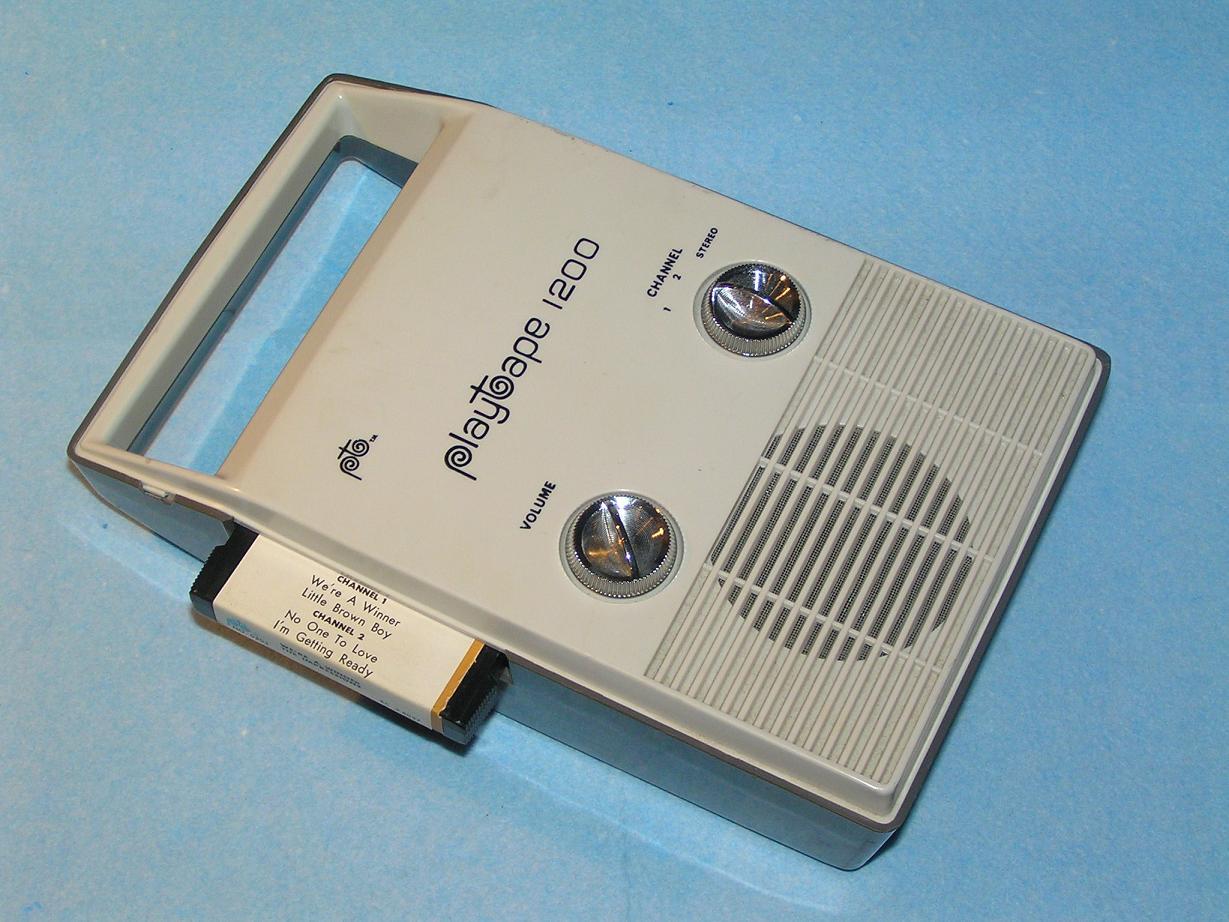 Sometime in 1967, Capitol released Beatles music on a brand new but short-lived format called "Playtapes." These tape cartridges did not have the capability to include entire albums, so two truncated four-song versions of the "Help!" Soundtrack were released in this portable format, "The Night Before" being on one of these releases. These "Playtapes" are highly collectable today. Sometime in 1967, Capitol released Beatles music on a brand new but short-lived format called "Playtapes." These tape cartridges did not have the capability to include entire albums, so two truncated four-song versions of the "Help!" Soundtrack were released in this portable format, "The Night Before" being on one of these releases. These "Playtapes" are highly collectable today.
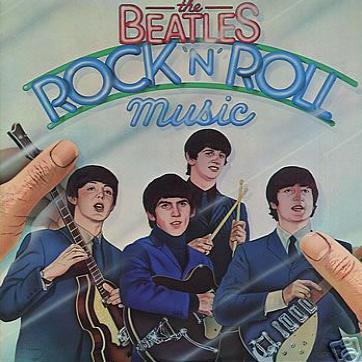 On June 7th, 1976, the successful double-album "Rock 'n' Roll Music" focused on the harder side of The Beatles catalog, "The Night Before" fitting the bill. George Martin was consulted regarding the preparation of this album and, with access to only the Capitol mixes, decided it was necessary to reverse the right and left channels of the original stereo mix of this song for this album, as well as adding filtered bass frequencies to the left channel. On October 27th, 1980, Capitol decided to divide the double album into two single albums for budget sales. "Rock 'n' Roll Music, Volume One" included the song. On June 7th, 1976, the successful double-album "Rock 'n' Roll Music" focused on the harder side of The Beatles catalog, "The Night Before" fitting the bill. George Martin was consulted regarding the preparation of this album and, with access to only the Capitol mixes, decided it was necessary to reverse the right and left channels of the original stereo mix of this song for this album, as well as adding filtered bass frequencies to the left channel. On October 27th, 1980, Capitol decided to divide the double album into two single albums for budget sales. "Rock 'n' Roll Music, Volume One" included the song.
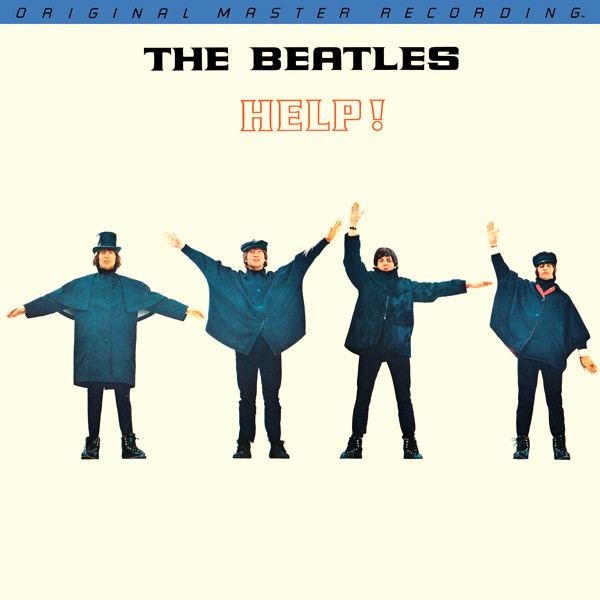 The first time the original British "Help!" album was made available in the US was the "Original Master Recording" vinyl edition released through Mobile Fidelity Sound Lab in January of 1986. This album included "The Night Before" and was prepared utilizing half-speed mastering technology from the original master tape on loan from EMI. This version of the album was only available for a short time and is quite collectible today. The first time the original British "Help!" album was made available in the US was the "Original Master Recording" vinyl edition released through Mobile Fidelity Sound Lab in January of 1986. This album included "The Night Before" and was prepared utilizing half-speed mastering technology from the original master tape on loan from EMI. This version of the album was only available for a short time and is quite collectible today.
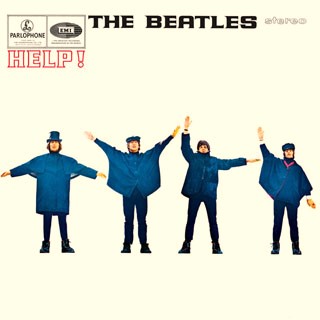 The compact disc era brought with it the entire British “Help!” album, which was released on CD on April 30th, 1987, a vinyl equivalent coming out on July 21st, 1987. These stereo releases contain the newly mixed version of the song which was crafted by the hands of original producer George Martin. This new mix was also utilized for the remastered version of this CD that released on September 9th, 2009, the remastered vinyl edition coming out on November 13th, 2012. The compact disc era brought with it the entire British “Help!” album, which was released on CD on April 30th, 1987, a vinyl equivalent coming out on July 21st, 1987. These stereo releases contain the newly mixed version of the song which was crafted by the hands of original producer George Martin. This new mix was also utilized for the remastered version of this CD that released on September 9th, 2009, the remastered vinyl edition coming out on November 13th, 2012.
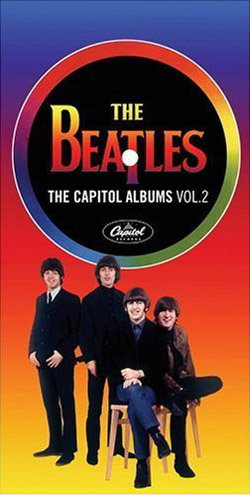 Two box sets were released by Capitol to reintroduce the original '60s albums to the general public. The second of the two, “The Capitol Albums, Vol. 2,” was released on April 11th, 2006 and contains the entire US “Help! Soundtrack Album” in both stereo and folded mono as originally heard in 1965. Both mixes of "The Night Before" were also contained on the promotional CD sampler that was issued just prior to this box set. Two box sets were released by Capitol to reintroduce the original '60s albums to the general public. The second of the two, “The Capitol Albums, Vol. 2,” was released on April 11th, 2006 and contains the entire US “Help! Soundtrack Album” in both stereo and folded mono as originally heard in 1965. Both mixes of "The Night Before" were also contained on the promotional CD sampler that was issued just prior to this box set.
Another promotional disc was released on or around November 6th, 2007 to coincide with the latest DVD release of the movie “Help!” This “7 Song Radio Sampler” featured all of the soundtrack Beatles songs, including “The Night Before,” in a handsome package that is quite hard to find today.
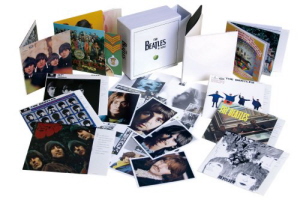 Except for being included in the original prints of the movie “Help!,” the mono mix of the song had never been heard on American shores in any form. Until 2009, that is. The September 9th, 2009 released CD box set “The Beatles In Mono” finally brought this mono mix to the US, along with the entire Beatles catalog that was originally mixed in mono. The original 1965 stereo mix is also included in this set, which was also released on vinyl on September 9th, 2014. Except for being included in the original prints of the movie “Help!,” the mono mix of the song had never been heard on American shores in any form. Until 2009, that is. The September 9th, 2009 released CD box set “The Beatles In Mono” finally brought this mono mix to the US, along with the entire Beatles catalog that was originally mixed in mono. The original 1965 stereo mix is also included in this set, which was also released on vinyl on September 9th, 2014.
Live Performances
The Beatles never performed the song live, but Paul eventually decided to include the song in his set list for his extensive "On The Run" tour, which spanned from July 15th, 2011 (New York City) to November 29th, 2012 (Edmonton, Canada).
Conclusion
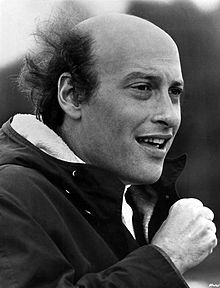 “I was given a demo tape with about nine songs and I chose six of them in a rather arbitrary way,” director Richard Lester said about the songs used in the film “Help!” He continues, “I fitted the songs into the film in places where I thought I could do something with them.” “I was given a demo tape with about nine songs and I chose six of them in a rather arbitrary way,” director Richard Lester said about the songs used in the film “Help!” He continues, “I fitted the songs into the film in places where I thought I could do something with them.”
Paul’s architecturally perfect pop song “The Night Before” was a natural choice to be one of these six. Richard Lester decided to have the group perform the song on Salisbury Plain preceeding a chase scene involving tanks, which of course has nothing to do with the song. Nonetheless, it got into the movie and, although not considered one of The Beatles biggest hits, it definitely got noticed. And deservedly so.
Song Summary
“The Night Before”
Written by: John Lennon / Paul McCartney
-
Song Written: January, 1965
-
Song Recorded: February 17, 1965
-
First US Release Date: August 13, 1965
-
-
US Single Release: n/a
-
Highest Chart Position: n/a
-
British Album Release: Parlophone #PCS 3071 “Help!”
-
Length: 2:33
-
Key: D major
-
Producer: George Martin
-
Engineers: Norman Smith, Ken Scott
Instrumentation (most likely):
- Paul McCartney - Lead Vocals, Bass Guitar (1963 Hofner 500/1), Lead Guitar (1962 Epiphone Casino ES-230TD)
- John Lennon - Electric Piano (1964 Hohner Pianet C), Backing Vocals
- George Harrison – Rhythm Guitar (1963 Gretsch 6119 Tennesssean), Lead Guitar (1961 Sonic Blue Fender Stratocaster), Backing Vocals
- Ringo Starr – Drums (1964 Ludwig Super Classic Black Oyster Pearl), maracas
Written and compiled by Dave Rybaczewski
|
IF YOU WOULD LIKE TO MAKE A DONATION TO KEEP THIS WEBSITE UP AND RUNNING, PLEASE CLICK BELOW!
|